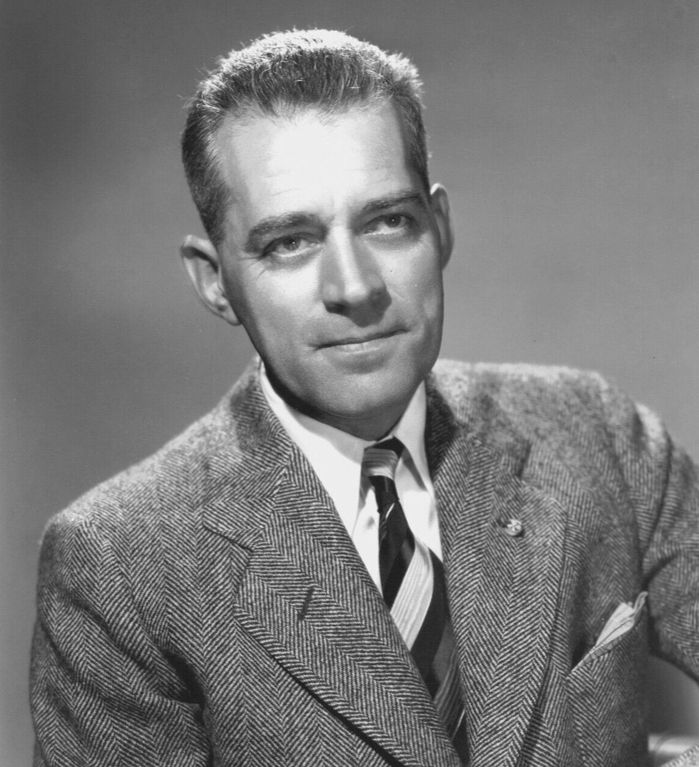W.S. Van Dyke
- Soames Inscker

- Jul 9
- 4 min read

Woodbridge Strong Van Dyke II, better known as W.S. Van Dyke, holds a unique place in the history of classic Hollywood cinema. Revered by some and overlooked by others, Van Dyke was one of MGM’s most efficient and versatile directors during the 1930s and early 1940s.
Nicknamed “One-Take Woody” or “Speedy Van Dyke” for his fast, economical directing style, he directed some of the era’s most iconic and beloved films—including The Thin Man series, San Francisco, and Tarzan the Ape Man.
Van Dyke’s films helped shape the studio system, blending commercial instincts with artistic economy, and his ability to span genres—from mystery to romance, musical to adventure—made him an invaluable figure in Hollywood’s Golden Age.
Early Life and Career Beginnings
Born on March 21, 1889, in San Diego, California, Van Dyke had an unconventional path to filmmaking. After a peripatetic childhood that included time in Montana and Seattle, he worked as a lumberjack, a gold prospector, and even a railroad worker. His varied life experiences would later lend a rugged authenticity to many of his adventure films.
He began his film career as an assistant to the legendary D.W. Griffith, working on The Birth of a Nation (1915) and Intolerance (1916). Van Dyke quickly absorbed Griffith’s storytelling techniques and visual style, and by 1917, he had moved into directing his own films. His early silent films were mostly Westerns and action pictures, but he quickly proved himself capable of handling a wide range of material.
The MGM Years and Rise to Prominence
Van Dyke’s career flourished when he joined Metro-Goldwyn-Mayer (MGM) in the late 1920s. With the advent of sound, he became a reliable go-to director for the studio, not only because of his technical skill but because he delivered films on time and under budget.
His breakthrough came with The Pagan (1929), a part-sound film shot on location in Tahiti. The film’s exoticism and romanticism became hallmarks of his style. This success led to even greater acclaim with White Shadows in the South Seas (1928), which won an Academy Award for cinematography and was among the earliest sound-integrated pictures to experiment with location filming.
Van Dyke demonstrated his ability to merge style, efficiency, and commercial appeal, all of which became essential qualities in the studio era.
Signature Films and Collaborations
Perhaps Van Dyke’s greatest legacy lies in his work on The Thin Man (1934), a deft blend of murder mystery and sophisticated comedy starring William Powell and Myrna Loy. Adapted from Dashiell Hammett’s novel, the film was a surprise hit and spawned five sequels, all of which Van Dyke directed (except the last, Song of the Thin Man). The sparkling chemistry between Powell and Loy, encouraged by Van Dyke’s relaxed direction and encouragement of improvisation, became iconic.
He also helmed Tarzan the Ape Man (1932), the first talking Tarzan film, which launched Johnny Weissmuller’s film career. His handling of action and exotic spectacle turned the film into a box office smash and helped define the jungle adventure genre.
Another major success was San Francisco (1936), starring Clark Gable, Jeanette MacDonald, and Spencer Tracy. Featuring a spectacular earthquake sequence that stunned audiences, the film mixed melodrama, religion, and spectacle with Van Dyke’s typical precision. It remains one of the definitive disaster films of its time.
Van Dyke also directed Marie Antoinette (1938) starring Norma Shearer, and musicals like Rose Marie (1936) and Naughty Marietta (1935), both pairing Jeanette MacDonald and Nelson Eddy, whose operatic musicals became MGM staples.
Work Ethic and Reputation
Van Dyke earned his "Speedy" moniker not just for show. He was famously known for requiring only a few takes, trusting his actors, and keeping his sets calm and efficient. He allowed improvisation and spontaneity, which often led to more natural performances. Yet this quickness didn’t mean carelessness—his best films demonstrate a strong grasp of pacing, dialogue, and audience engagement.
He was also admired for his decency. A devout Christian Scientist and later an ordained minister, Van Dyke was known to support actors and crew in times of difficulty. He frequently advocated for more humane treatment of studio workers and fought for inclusion—most notably standing up for Hattie McDaniel and other Black performers in an industry rife with racial prejudice.
Decline and Death
By the early 1940s, Van Dyke’s health began to deteriorate due to cancer and heart issues. In a tragic and characteristically stoic act, Van Dyke committed suicide in 1943 at the age of 53 to spare his family the burden of his suffering. MGM and his colleagues were devastated by the loss.
He left behind a body of work that spanned over 90 films and exemplified the power and efficiency of the studio system at its peak.
Legacy
W.S. Van Dyke may not be as well-known as John Ford or Howard Hawks, but his contributions to Hollywood are no less vital. He had a keen sense of audience appeal, a flexible and pragmatic approach to filmmaking, and a gift for drawing natural, engaging performances from his stars.
In many ways, he was the consummate studio director—proficient across genres, trusted by producers, beloved by actors, and remembered for some of the most delightful and enduring films of the 1930s. In The Thin Man, Tarzan, San Francisco, and his other works, we glimpse not just the signature of a skilled craftsman, but a director who understood the rhythm of cinema and the pulse of the audience.
In Hollywood’s great constellation of stars and auteurs, W.S. Van Dyke remains a steadfast, guiding force behind the scenes—fast, faithful, and fascinating.





